Shin Shin Toitsu Aikido (心身統一合氣道) or Ki Aikido (氣 合気道) is a Japanese martial art, a gendai budo (contemporary martial art). It is part of the martial arts derived from aikido, which emerged after the death of its founder, Morihei Ueshiba (植芝 盛平 ) in 1969. It began in the early 1970s with the creation of Koichi Tohei’s Ki Society (10 Dan in aikido). This martial art focuses on mind and body coordination and is based on aikido and Japanese yoga techniques and promotes non-violent conflict resolution and self-development.

Koichi Tohei was taught Shinshin-tōitsu-dō (also known as “Japanese yoga”) by Tempu Nakamura. He felt that Tempu Sensei’s teaching and explanation clearly showed what Morihei Ueshiba was able to do in aikido (especially the idea that the mind moves the body). As a result, he began to introduce exercises from Shinshin-tōitsu-dō, such as the “unbent arm” and the “unbounded body” into his aikido classes. He started doing this as Chief Instructor of Aikikai while Morihei Ueshiba was still alive. He also felt that the concepts of Shinshin-toitsu-do were more clearly applicable to everyday life. He later formalised his style, including omitting some aikido techniques that he considered ineffective against a partner who could coordinate mind and body. Although Tohei Sensei gave the Ki Development aspect of his style the name Shinshin-toitsu-do, this covered only part of Tempu Sensei’s programme/teachings, and some of it was modified by him.
The teaching of Ki Aikido has been divided between different federations, each reflecting the experience of their founders: the Ki Society with Koichi Tohei and his son Shinichi Tohei, the Ki no Kenkyukai Internationale Association with Kenjiro Yoshigasaki and the Ki Federation of Great Britain with Ken Williams (or Kenneth Williams).
Ki Aikido began to be practiced in Romania in the 90s under the guidance of Mervyn Williams Sensei who was the student and assistant of Sensei Ken Williams, the founder of The Ki Federation of Great Britain*. He was the first non-Japanese assistant to a Japanese instructor, Kenshiro Abbe Sensei, later practicing with Koichi Tohei Sensei, the founder of Shin Shin Toitsu Aikido* (Ki Aikido).
* Shin Shin Toitsu Aikido (also known internationally as the Ki Society) and the Ki Federation of Great Britain are protected by copyright and are the property of their respective rights holders. The Ki and Aikido Association is not affiliated with any of these organizations.

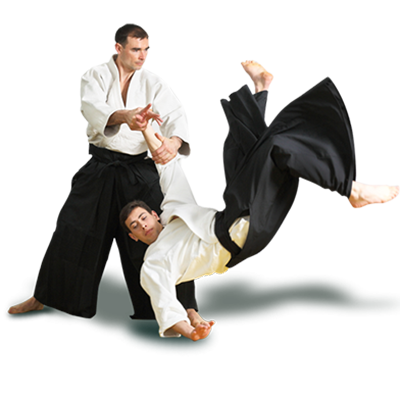
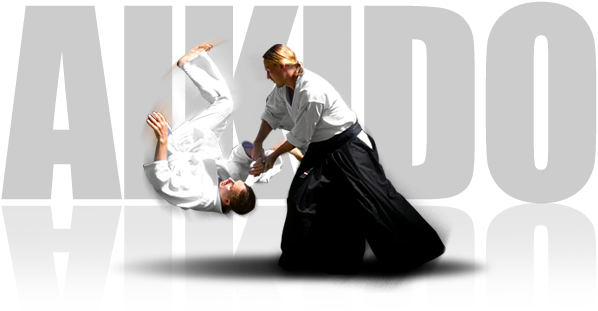
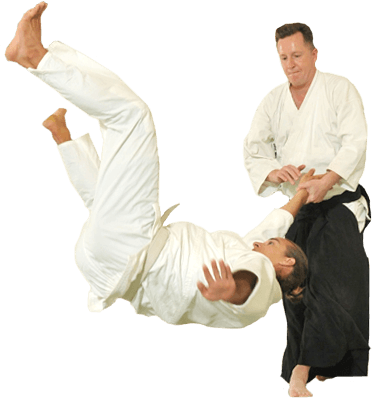



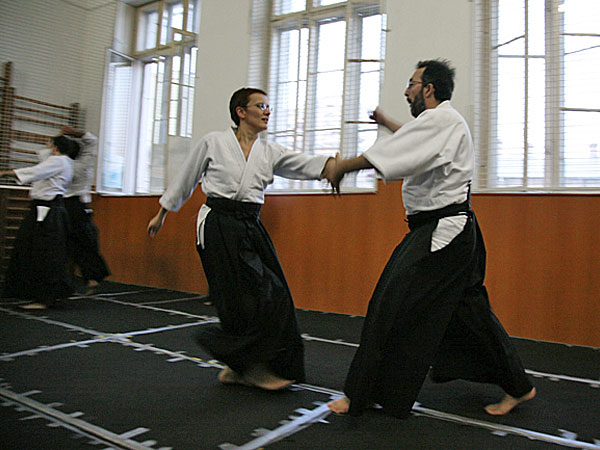
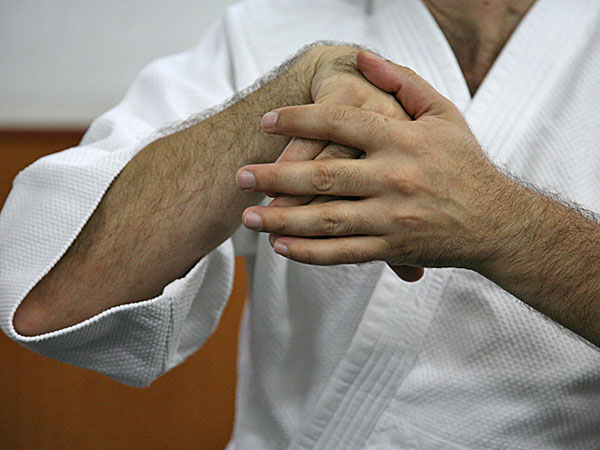
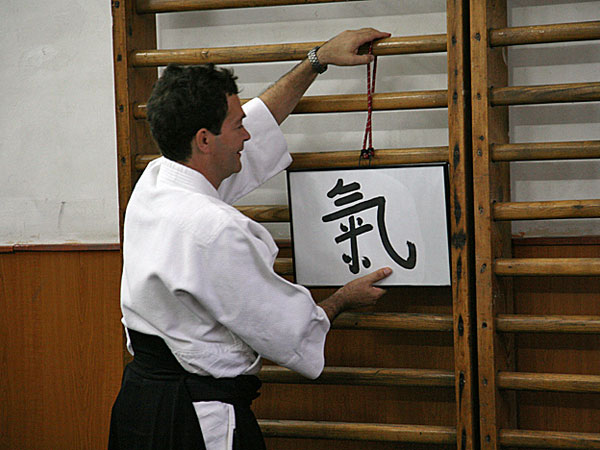
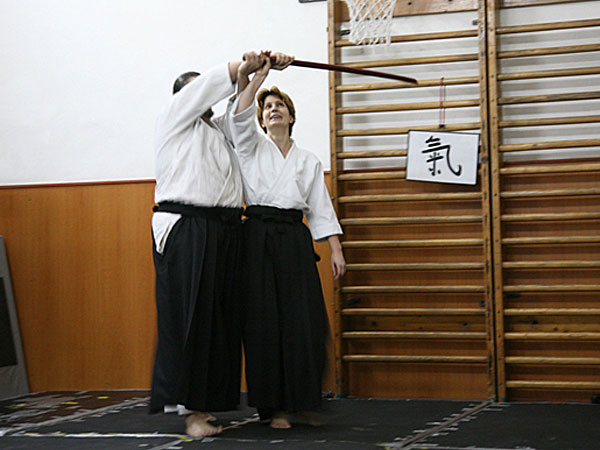
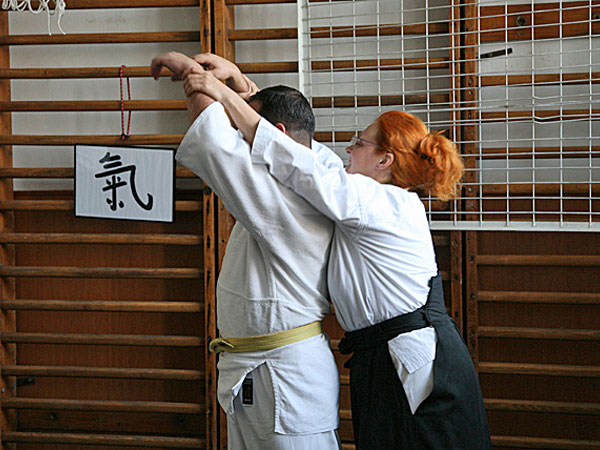
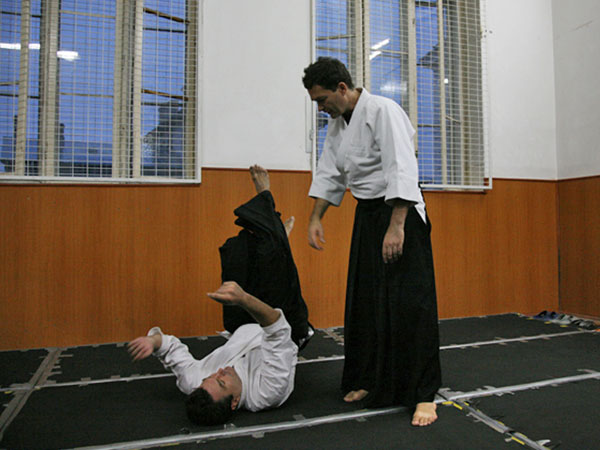
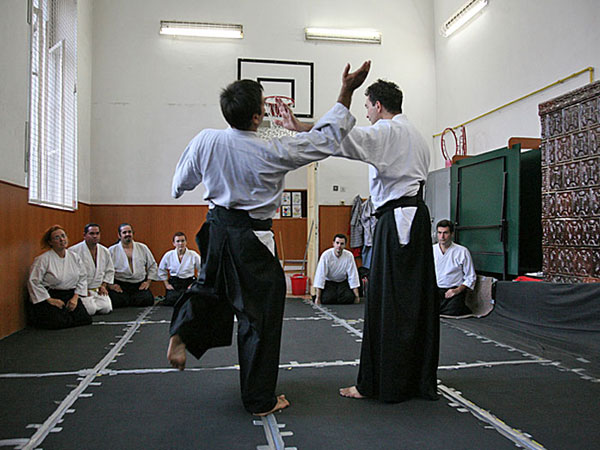

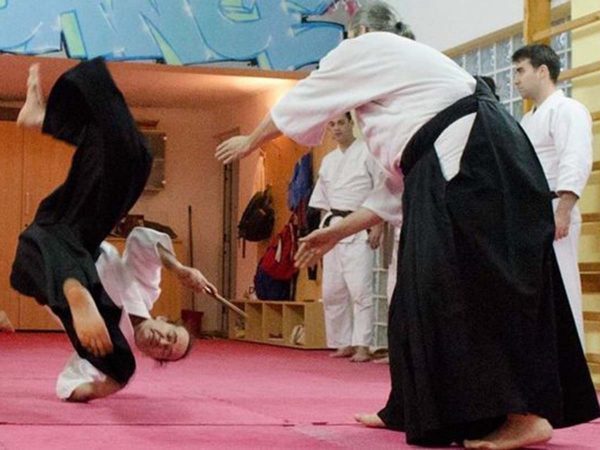
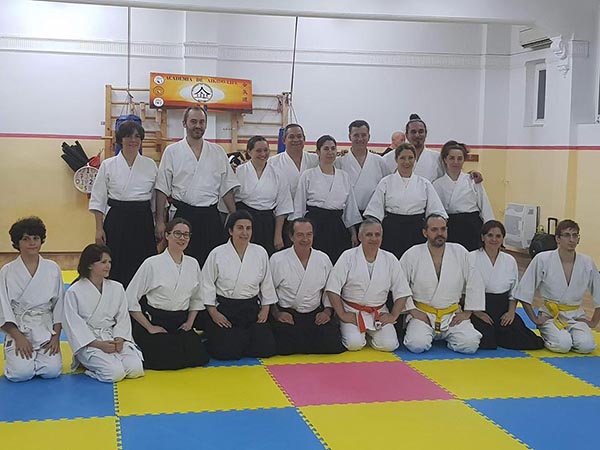
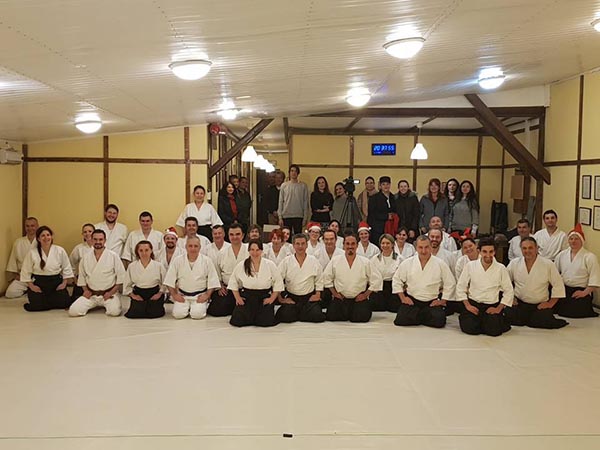
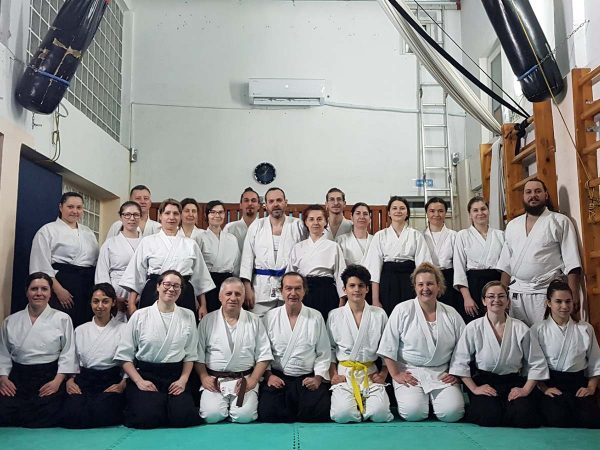




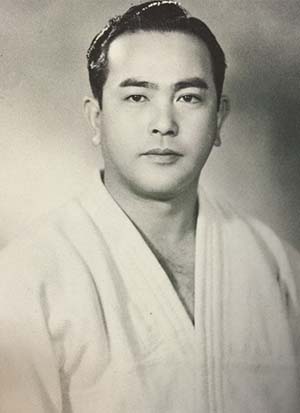 In 1937, at the age of 16, he entered the Keio judo school, but had to drop out for a year because he became ill with pleurisy. Doctors put him under very drastic treatment and forbade him from practising any more hard training because it could have endangered his life.Tohei Sensei began to study religion and Eastern philosophy intensively and decided to practice what he had read. He devoted his time to Zen and Misogi training (assiduous breathing exercises in one or two-day sessions). After a while he returned to the doctors, who found that the illness had disappeared.
In 1937, at the age of 16, he entered the Keio judo school, but had to drop out for a year because he became ill with pleurisy. Doctors put him under very drastic treatment and forbade him from practising any more hard training because it could have endangered his life.Tohei Sensei began to study religion and Eastern philosophy intensively and decided to practice what he had read. He devoted his time to Zen and Misogi training (assiduous breathing exercises in one or two-day sessions). After a while he returned to the doctors, who found that the illness had disappeared.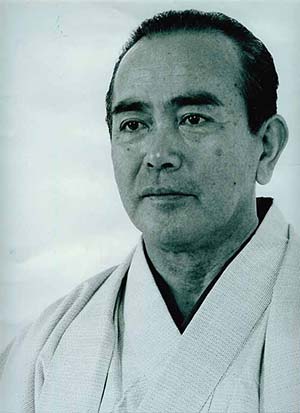 In 1947, Tohei Sensei was introduced to the teachings of Tempu Nakamura Sensei (the first man to teach yoga in Japan) who spoke to him about the importance of positive thinking and the fact that the mind moves the body. It was at that moment that Tohei Sensei realised that this was the universal principle underlying the martial arts. He recalled that when he watched O Sensei performing the movements of Aikido, it was clear to him that the Master was leading his partner’s mind and, as a result, leading his body.
In 1947, Tohei Sensei was introduced to the teachings of Tempu Nakamura Sensei (the first man to teach yoga in Japan) who spoke to him about the importance of positive thinking and the fact that the mind moves the body. It was at that moment that Tohei Sensei realised that this was the universal principle underlying the martial arts. He recalled that when he watched O Sensei performing the movements of Aikido, it was clear to him that the Master was leading his partner’s mind and, as a result, leading his body.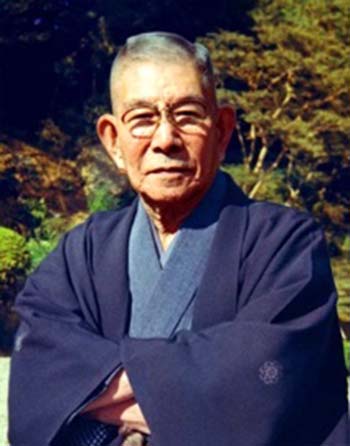 Tempū Nakamura later moved to Fukuoka (福岡岡市, Fukuoka City), Fukuoka Prefecture (福岡県), to live with a relative. Once there, he took private lessons from an Englishman and enrolled at Shūyūkan (Japanese: 修猷館, now Fukuoka Prefectural Shuyukan Senior High School in Sawara-ku) school where English was the medium of instruction and where he became an expert in his family’s style. of judo (随変流) and also trained in kenjutsu and iaijutsu. While practicing judo, he completely defeated an opponent in Kumamoto who then tried to kill Nakamura in revenge. In the violent encounter, Nakamura stabbed and killed his attacker, which was considered self-defence. He left school and joined the ultra-nationalist secret society Gen’yōsha, establishing a friendship with Tōyama Mitsuru.
Tempū Nakamura later moved to Fukuoka (福岡岡市, Fukuoka City), Fukuoka Prefecture (福岡県), to live with a relative. Once there, he took private lessons from an Englishman and enrolled at Shūyūkan (Japanese: 修猷館, now Fukuoka Prefectural Shuyukan Senior High School in Sawara-ku) school where English was the medium of instruction and where he became an expert in his family’s style. of judo (随変流) and also trained in kenjutsu and iaijutsu. While practicing judo, he completely defeated an opponent in Kumamoto who then tried to kill Nakamura in revenge. In the violent encounter, Nakamura stabbed and killed his attacker, which was considered self-defence. He left school and joined the ultra-nationalist secret society Gen’yōsha, establishing a friendship with Tōyama Mitsuru.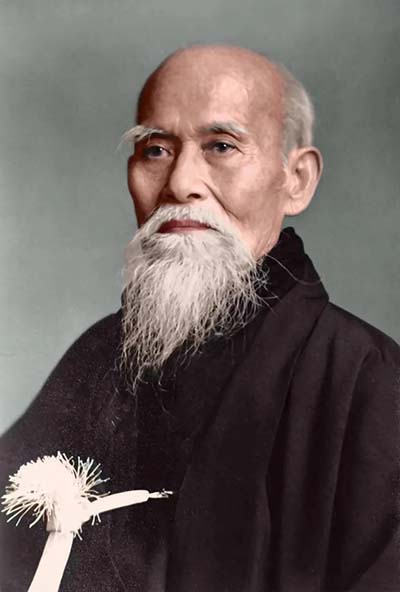 Morihei Ueshiba (植芝 盛平 Ueshiba Morihei, b. 14 December 1883, Tanabe, Japan, d. 26 April 1969, Iwama, Japan) was the founder of the Japanese martial art aikido. He is sometimes referred to as kaiso 開祖 (“founder”) or Ōsensei 翁先生 (“Great Teacher”) by some aikidoka.
Morihei Ueshiba (植芝 盛平 Ueshiba Morihei, b. 14 December 1883, Tanabe, Japan, d. 26 April 1969, Iwama, Japan) was the founder of the Japanese martial art aikido. He is sometimes referred to as kaiso 開祖 (“founder”) or Ōsensei 翁先生 (“Great Teacher”) by some aikidoka.
